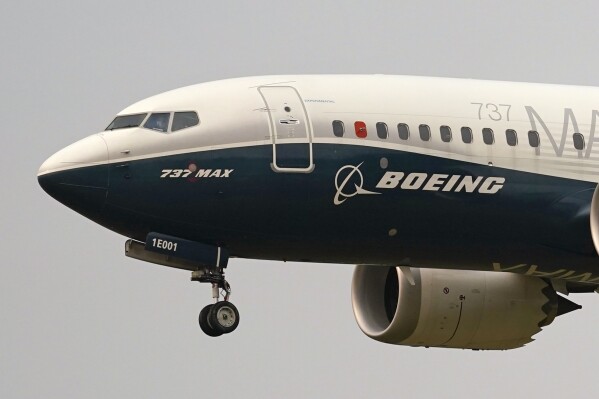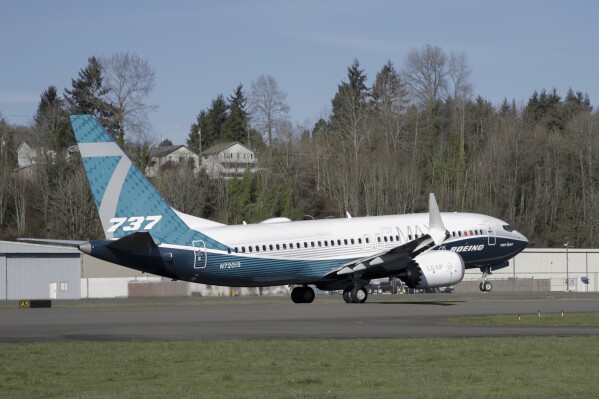NTSB says bolts on Boeing jetliner were missing before a panel blew out in midflight last month
Bolts that helped secure a panel to the frame of a Boeing 737 Max 9 were missing before the panel blew off the Alaska Airlines plane last month, according to accident investigators.
The National Transportation Safety Board issued a preliminary report on the Jan. 5 incident Tuesday.
The report included a photo from Boeing, which worked on the panel, which is called a door plug. In the photo, three of the four bolts that prevent the panel from moving upward are missing. The location of the fourth bolt is obscured.



The investigators said that the lack of certain damage around the panel indicates that all four bolts were missing before the plane took off from Portland, Oregon.
Pilots were forced to make a harrowing emergency landing with a hole in the side of the plane.
Without the bolts, nothing prevented the panel from sliding upward and detaching from “stop pads” that secured it to the airframe.
The preliminary report said the door plug, installed by supplier Spirit AeroSystems, arrived at Boeing’s factory near Seattle with five damaged rivets around the plug. A Spirit crew replaced the damaged rivets, which required removing the four bolts to open the plug.
A text between Boeing employees who finished working on the plane after the rivets were replaced included the photo showing the plug with missing bolts, according to the report.
The NTSB did not declare a probable cause for the accident — that will come at the end of an investigation that could last a year or longer.
“Whatever final conclusions are reached, Boeing is accountable for what happened,” CEO David Calhoun said in a statement. “An event like this must not happen on an airplane that leaves our factory. We simply must do better for our customers and their passengers.”
Investigators said they were still trying to determine who authorized the Boeing crew to open and reinstall the door plug.
Safety experts have said the accident could have been catastrophic if the Alaska jet had reached cruising altitude. The decompression in the cabin after the blowout would have been far stronger, and passengers and flight attendants might have been walking around instead of being belted into their seats.
When Alaska and United Airlines began inspecting their other Max 9s, they reported finding loose hardware including loose bolts in some of the door plugs.
The incident has added to questions about manufacturing quality at Boeing that started with the deadly crashes of two Max 8 jets in 2018 and 2019, killing 346 people.
The Federal Aviation Administration is investigating whether Boeing and its suppliers followed proper safety procedures in manufacturing parts for the Max. The FAA has barred Boeing from speeding up production of 737s until the agency is satisfied about quality issues.
FAA Administrator Michael Whitaker said Tuesday that his agency is about halfway through a six-week audit of manufacturing processes at Boeing and Spirit, its key supplier on the Max. He said the agency is confronted with two questions — what’s wrong with the Max 9, and “what’s going on with the production at Boeing?”
Spirit, which Boeing spun off as a separate company nearly 20 years ago, said in a statement that it is reviewing the NTSB preliminary report and was working with Boeing and regulators “on continuous improvement in our processes and meeting the highest standards of safety, quality and reliability.”
___
This story has been corrected to note that a Spirit crew, not a Boeing crew, repaired the rivets.
Disclaimer: The copyright of this article belongs to the original author. Reposting this article is solely for the purpose of information dissemination and does not constitute any investment advice. If there is any infringement, please contact us immediately. We will make corrections or deletions as necessary. Thank you.



